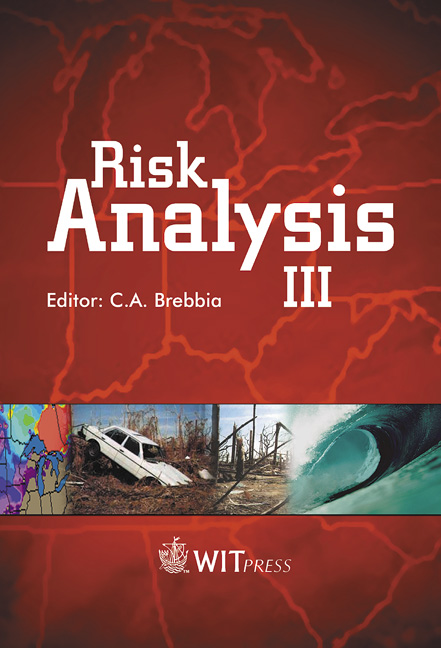Navigational Risk In Methods Of Assessing The Safety Of The Vessel’s Mooring Manoeuvre
Price
Free (open access)
Transaction
Volume
31
Pages
Published
2002
Size
462 kb
Paper DOI
10.2495/RISK020131
Copyright
WIT Press
Author(s)
S. Gucma
Abstract
Navigational risk in methods of assessing the safety of the vessel’s mooring manoeuvre S. Gucma Szczecin Maritime University, Poland Abstract The article presents a new method of assessing the safety of the vessel’s mooring manoeuvre, which uses the theory of risk. Navigational risk is determined when using probabilistic methods to establish the probability of accident, and energetic methods to estimate its results. Examples have been presented of applying this method for the determination of optimal parameters of waterways and conditions for operating them, and for assessing the safety of the vessel’s mooring manoeuvre performed in various navigational conditions. 1 Introduction At the present time, one of the most urgent problems of navigational safety is the ability to estimate navigational risk in restricted water areas [l]. There are two concepts of risk: technological and economic, and they depend on the method of describing the results of navigational accident. In the applications of marine traffic engineering it has been assumed that the technological risk is called navigational risk. In the navigational risk the assessment of accident results consists in a mathematical description of the dynamics of the vessel’s collision. In the economic risk the assessment of results consists in an assessment of the costs of the accident results. In the course of performing a specific vessel manoeuvre in restricted water areas it may come to accidents resulting from these units’ movement. They are called navigational or manoeuvring accidents and classified as follows: Running aground (understood as unintentional contact of the hull, rudder, or propeller with the water area’s bottom). Damage of the hull during contact of the vessel with the bottom (arisen during the ship’s unintentional striking against a bottom element, when the
Keywords





